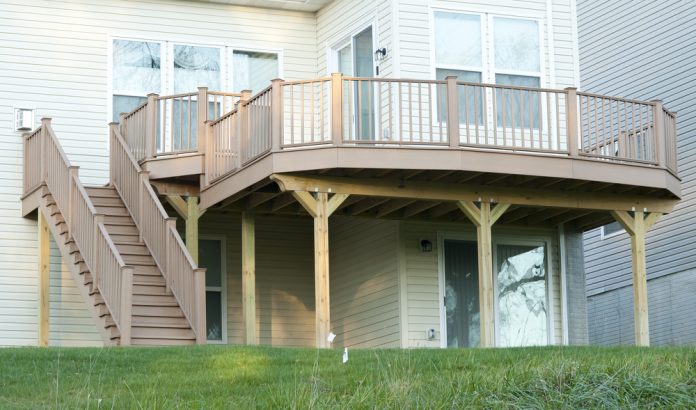Replacing a railing may seem like a simple enough task. You take an old railing out and put a new railing in and that’s it, right? While that is true in theory, there are actually quite a lot of common mistakes made while replacing a railing. Whether we’re talking about a railing around a deck or something for your floating stairs, here are some common mistakes when replacing a railing and tips on how to avoid them.
Taking measurements wrong
As the old adage says, “measure twice, cut once.” The truth of that is unquestionable — you only really make the one cut, so you have to make it count, as you can’t undo it. The problem is that many people simply don’t take the time to understand their measurements properly. You need to make sure whether the railing system you’re installing is using nominal sizes or actual sizes, or whether measurements are taken from center post to center post. When it comes to measurements, the importance really is in the details, so make sure you pay attention.
Structural issues with posts
The thing about railing posts is that not all posts and post sleeves can actually be structural. This means that not all posts can actually provide structural support on their own. Those that don’t need to be shimmed and mounted over 2x or 4x wood posts, so make sure you test for that.
Not following instructions
DIY can be pretty empowering and if you do a lot of it, it might actually get to your head a little bit. People can get a bit overconfident with their handy skills, and this may lead to the very foolish decision to skip the instruction manual. The details on why this is a very bad idea are plentiful, as instruction manuals that come with railing kits have very specific instructions on the tools you need to use, as well as what you’ll need to be doing with the particular elements of the kit. You’ll get lost quick if you just toss that manual out, so make sure you study it thoroughly before you commence with any work whatsoever.
Balusters end up too short
There are specific regional requirements for baluster heights, but the problem with cutting them is that many people often forget that there are a lot more elements that go into a baluster and simply cut it too short. Make sure you calculate the bottom rail, top rail, and rail cap along with it to avoid this mistake. Find out what your code requirements for the height in question is, as you don’t want to break any regulations either.
Incorrect post caps measurements
Post caps usually come in 4×4, but that doesn’t mean this is true for every single one of them. You need to measure the outside diameter of your post in order to determine the appropriate cap size, as doing it the other way around may yield very unappealing results.
Making things messy
You’d be surprised with how often this mistake gets made, but yes — you should definitely clean up right after finishing working on a railing. Mess is just terrible in general, but when leaving debris lying around on your freshly mounted railings, you run the risk of damaging them, rendering all of your hard work in vain.
Find a Home-Based Business to Start-Up >>> Hundreds of Business Listings.
















































